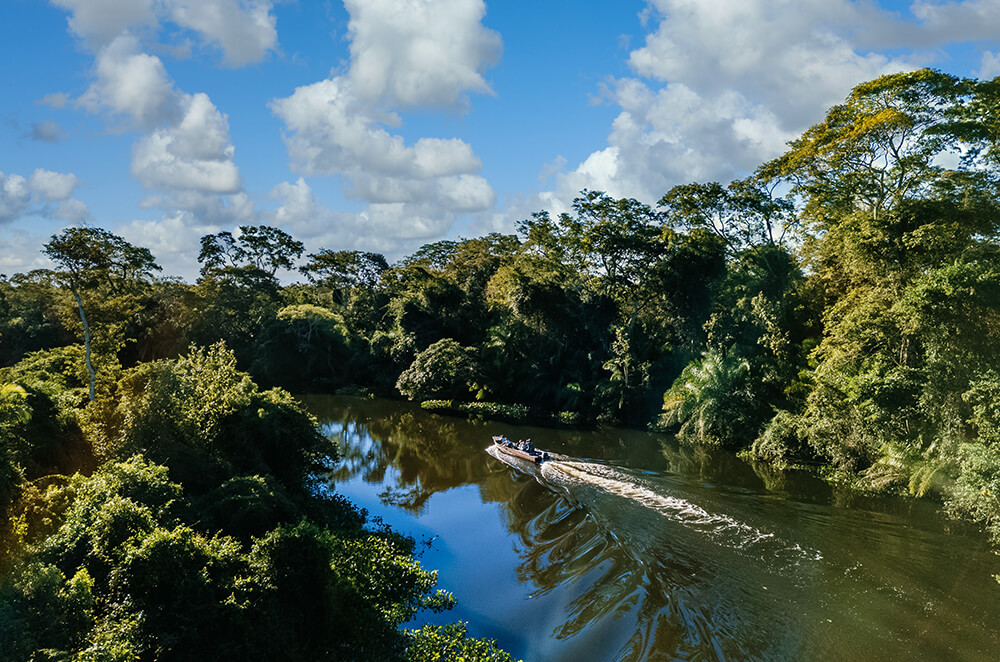
The Vital Role of Mangroves in Climate Change Mitigation
Fecha: 27/07/2023
Forests and oceans get most of the attention for their ability to capture carbon dioxide, but nature’s wonder doesn’t end there: mangroves too are excellent carbon sinks, and therefore crucial in mitigating the effects of climate change.
Found in tropical and subtropical coastal regions around the world, mangroves are trees that can thrive in salty environments. They usually grow in loose, wet soils thanks to their complex root systems, which anchor them to the soil and also help them filter out salt. In fact, they’re masters at surviving in tricky surroundings and have evolved to adapt to them in fascinating ways.
In spite of this, and as is the case with so many ecosystems today, mangroves are at great risk. Development in coastal areas often means clearing mangrove forests for building construction or for fish and shrimp farming. Pollution too plays a role in the destruction of mangroves. Sadly, mangroves have become traps for plastics and other litter brought in by the tides; when tangled in their roots, these plastics can deprive mangroves of oxygen and kill them.
Carbon storage superheroes
Their destruction is worrying not only because of their ecological importance –they are biodiversity hotspots and protect coastlines from erosion, storms and tsunamis–, but because they play a significant role in reducing greenhouse gas emissions.
Mangrove ecosystems act as carbon sinks, sequestering vast amounts of carbon dioxide from the atmosphere, and help to regulate the planet's climate. Despite covering a relatively small percentage of the Earth's surface, their ability to store carbon makes them essential in the fight against climate change.
As they grow, mangroves pull carbon dioxide out of the atmosphere and use it to build their roots, branches and leaves. Unlike with other trees, when a mangrove dies the absorbed carbon stays within the tree, sinking to the seafloor and eventually being buried under sediment. This is why the carbon they absorb is called “blue carbon."
This is why mangrove ecosystems are even more valuable than terrestrial forests in the fight against climate change: they can store significantly more carbon than trees on land. Although mangroves account for less than 2% of marine environments, they carry out 10 to 15% of global carbon burial.
Saving Mangroves in Latin America
Even as mangroves are being destroyed, they are also being protected by people and organizations across the globe. For years now a couple of conservation projects in Kenya have been trading carbon credits from mangrove conservation and restoration, an innovative solution that has been adopted in other regions as well.
In Vietnam, there are ongoing efforts to protect the Can Gio Mangrove Biosphere Reserve. These focus on reforestation, environmental education for local communities, and sustainable aquaculture practices so that people whose livelihoods depend on mangroves can learn to work them sustainability.
Latin America and the Caribbean, where about 26% of the world’s mangrove forests are found, has also started its own conservation initiatives. In September 2022 a project supported by UNESCO began assessing mangroves in seven biosphere reserves in Colombia, Cuba, Ecuador, El Salvador, Mexico, Panama, and Peru to develop restoration directives.
As in other conservation projects worldwide, working with local communities will be essential for the initiative, as will factoring in education and awareness of the importance of mangroves. Particularly, the project aims to involve young people to implement their initiatives in their communities and give them the tools to develop skills that will promote collective action.
